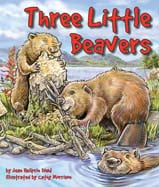Alignment to Standards for AZ

| Grade | Number | Standard |
|---|---|---|
| 1 | PO 2 | Identify similarities and differences between animals and their parents. |
| 1 | PO 2 | Compare the following observable features of living things: movement _ legs, wings, protection _ skin, feathers, tree bark, respiration _ lungs, gills, support _ plant stems, tree trunks, |
| 1 | PO 3 | Describe how plants and animals within a habitat are dependent on each other. |
| 1 | PO 3 | Identify observable similarities and differences (e.g., number of legs, body coverings, size) between/among different groups of animals. |
| 2 | PO 1 | Identify animal structures that serve different functions (e.g., sensory, defense, locomotion). |
| 3 | PO 1 | Identify adaptations of plants and animals that allow them to live in specific environments. |
| 3 | PO 2 | beneficial and harmful impacts of natural events and human activities on the environment (e.g., forest fires, flooding, pesticides). |
| 3 | PO 4 | Describe how plants and animals cause change in their environment. |
| 4 | PO 1 | Recognize that successful characteristics of populations are inherited traits that are favorable in a particular environment. |
| 4 | PO 1 | Compare structures in plants (e.g., roots, stems, leaves, flowers) and animals (e.g., muscles, bones, nerves) that serve different functions in growth and survival. |
| 4 | PO 1 | natural events and human activities have positive and negative impacts on environments |
| 4 | PO 2 | Give examples of adaptations that allow plants and animals to survive. camouflage _ horned lizards, coyotes, mimicry _ Monarch and Viceroy butterflies, physical _ cactus spines, mutualism _ species of acacia that harbor ants, which repel other harmful ins |